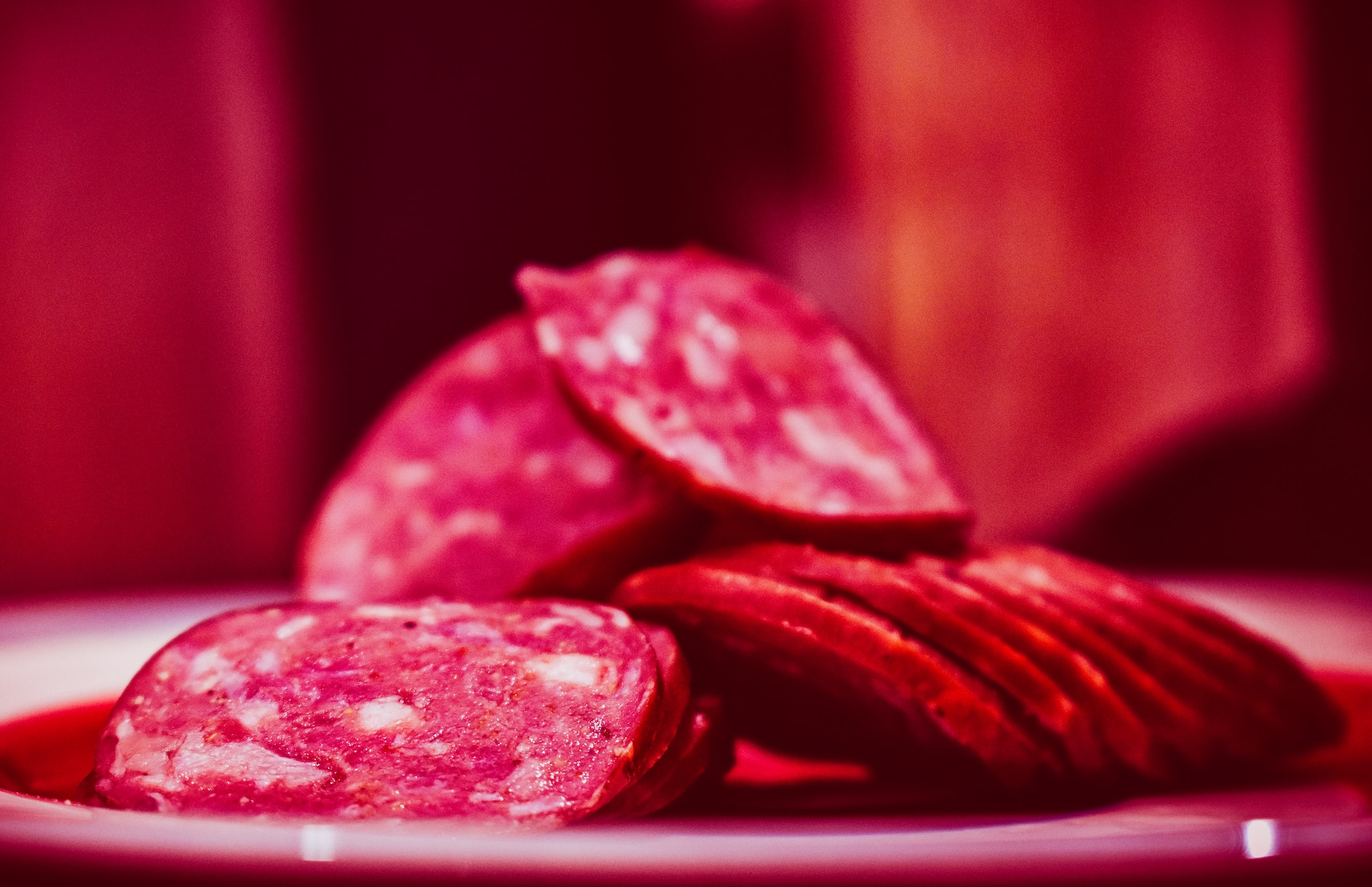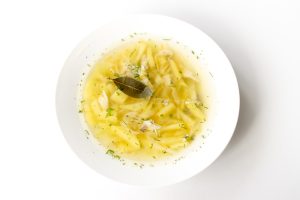
Discover the fascinating journey of pepperoni, a beloved sausage deeply entrenched in American culinary culture despite its Italian origins. This article unveils the evolution, cultural significance, and diverse types of pepperoni, catering to both culinary enthusiasts and those seeking a deeper understanding of this iconic meat.
From its traditional roots to modern variations, learn what makes pepperoni a star ingredient and why it has become a culinary icon. Delve into the question “What is pepperoni made of?” Whether you’re a foodie exploring diverse flavors or a home cook keen on mastering the art of homemade pepperoni, this article is your guide to the origins, flavors, and practices surrounding this cherished sausage.
Key Takeaways
- Cultural Fusion: Pepperoni’s roots lie in Italian immigration to America, showcasing a unique cultural fusion.
- Iconic Pizza Companion: Pepperoni’s association with pizza is so strong that “pepperoni pizza” is practically synonymous with the dish.
- Versatility in Cuisine: Beyond pizza, pepperoni has found its way into sandwiches, salads, and pasta dishes, showcasing its culinary versatility.
- Ingredients: A blend of beef and pork, seasoned with spices like paprika and garlic, gives pepperoni its distinctive flavor.
- Types of Pepperoni: Varieties include traditional, turkey, beef-only, spicy, nitrate-free, and artisanal, catering to diverse preferences.
- Flavor Profile: Pepperoni offers a robust, slightly spicy taste with a well-balanced texture, making it a versatile addition to various dishes.
- Homemade Option: While commercial production involves specialized processes, making pepperoni at home is a rewarding venture with a simplified recipe provided.
Origins of Pepperoni
Contrary to the perception of many, pepperoni’s roots do not trace back to Italy. Its creation is an American culinary tale woven by Italian immigrants. The term “pepperoni” itself, borrowed from the Italian “peperone,” meaning bell pepper, showcases the cultural fusion that characterizes this sausage. Originally envisioned as a spicy, robust meat, pepperoni emerged as a key ingredient in the American pizza landscape during the early 20th century.
Evolution and Cultural Significance:
- Pepperoni has transcended its humble beginnings to become a culinary icon in modern culture. Its association with pizza is so profound that the phrase “pepperoni pizza” is practically synonymous with the dish itself. The sausage’s intense flavor, a result of a meticulous blend of spices, has elevated it to a status where it is not just an accompaniment but often the star of the show.
- In contemporary culinary circles, pepperoni has become a versatile ingredient. Its savory profile makes it a sought-after addition to sandwiches, salads, and pasta dishes, showcasing its adaptability and appeal across various cuisines.
What is Pepperoni made of?
Pepperoni is a flavorful cured sausage traditionally made from a blend of beef and pork. The meat is finely ground to achieve a smooth texture, and a signature spice mix is added to create its distinct taste. Common spices include paprika, garlic, fennel, and cayenne pepper. These spices not only contribute to the sausage’s flavor but also provide the characteristic reddish hue associated with pepperoni. The meat and spice blend is then stuffed into casings and undergoes a curing process, typically involving air-drying or smoking. Nitrites or nitrates may be used during curing as preservatives and to enhance color.
Ingredients of Pepperoni:
The specific ingredients in pepperoni can vary slightly depending on the brand and recipe, but traditional pepperoni typically includes the following:
- Meat: A blend of beef and pork is commonly used, providing a balance of flavors and textures. Some variations may use only one type of meat.
- Spices: Pepperoni gets its distinctive flavor from a mix of spices, which may include paprika, garlic powder, fennel, black pepper, cayenne pepper, and other seasonings.
- Salt: Salt is a crucial ingredient for both flavor enhancement and preservation.
- Curing Agents: Nitrites or nitrates are often added as curing agents. They help prevent bacterial growth, enhance color, and contribute to the characteristic taste.
- Starter Cultures (optional): In some traditional pepperoni recipes, starter cultures may be used to ferment the sausage, adding complexity to the flavor.
- Casings: Natural or synthetic casings encase the seasoned meat mixture. Natural casings are typically made from animal intestines.
Types of Pepperoni
Pepperoni comes in various forms, catering to different preferences and dietary restrictions. Some common types include:
- Traditional Pepperoni: Made with a combination of beef and pork, seasoned with classic spices, and cured for a robust flavor.
- Turkey Pepperoni: A leaner alternative to traditional pepperoni, made from ground turkey. It often has a milder taste and lower fat content.
- Beef Pepperoni: Some pepperoni is made exclusively from beef, catering to those who prefer or require a pork-free option.
- Spicy Pepperoni: Varieties labeled as “spicy” typically contain a higher amount of cayenne pepper or other hot spices, providing an extra kick.
- Nitrate-Free or Low-Nitrate Pepperoni: Addressing health concerns associated with nitrate consumption, some manufacturers offer nitrate-free or low-nitrate pepperoni options.
- Artisanal or Regional Varieties: Different regions may have their variations of pepperoni, often influenced by local tastes and culinary traditions.
What Does Pepperoni Taste Like?
Pepperoni has a robust and savory flavor profile. The combination of spices, including garlic, paprika, and fennel, imparts a slightly spicy and aromatic taste. The use of cayenne pepper adds a subtle heat, making pepperoni distinctively zesty. The curing process further enhances the overall flavor, providing a well-balanced and satisfying taste. The texture is typically firm, with a satisfying chewiness, making it a versatile and enjoyable addition to various dishes.
How to Make Pepperoni at Home?
While the commercial production of pepperoni often involves specialized equipment and controlled environments, making pepperoni at home is a rewarding culinary venture. Here’s a simplified recipe:
Ingredients:
- 2 pounds of lean beef (such as sirloin), finely ground
- 1 pound of pork shoulder, finely ground
- 2 teaspoons of paprika
- 2 teaspoons of garlic powder
- 1 teaspoon of fennel seeds
- 1 teaspoon of cayenne pepper (adjust for spice preference)
- 1 tablespoon of salt
- 1 teaspoon of sugar
- 1/2 teaspoon of curing salt (optional)
- Collagen casings
Instructions:
- In a large mixing bowl, combine the finely ground beef and pork.
- In a separate bowl, mix paprika, garlic powder, fennel seeds, cayenne pepper, salt, sugar, and curing salt if using.
- Add the spice mixture to the meat and thoroughly combine until the spices are evenly distributed.
- If using collagen casings, soak them in warm water according to the package instructions.
- Stuff the meat mixture into the casings, filling them evenly and without air pockets.
- Twist the sausages into individual links, tying the ends securely.
- Allow the pepperoni to air-dry for a few hours or refrigerate overnight to intensify flavors.
- Smoke the pepperoni if desired, or simply air-dry until it reaches the desired texture.
- Once ready, slice and enjoy your homemade pepperoni on pizzas, sandwiches, or as a flavorful snack.







No comment yet, add your voice below!